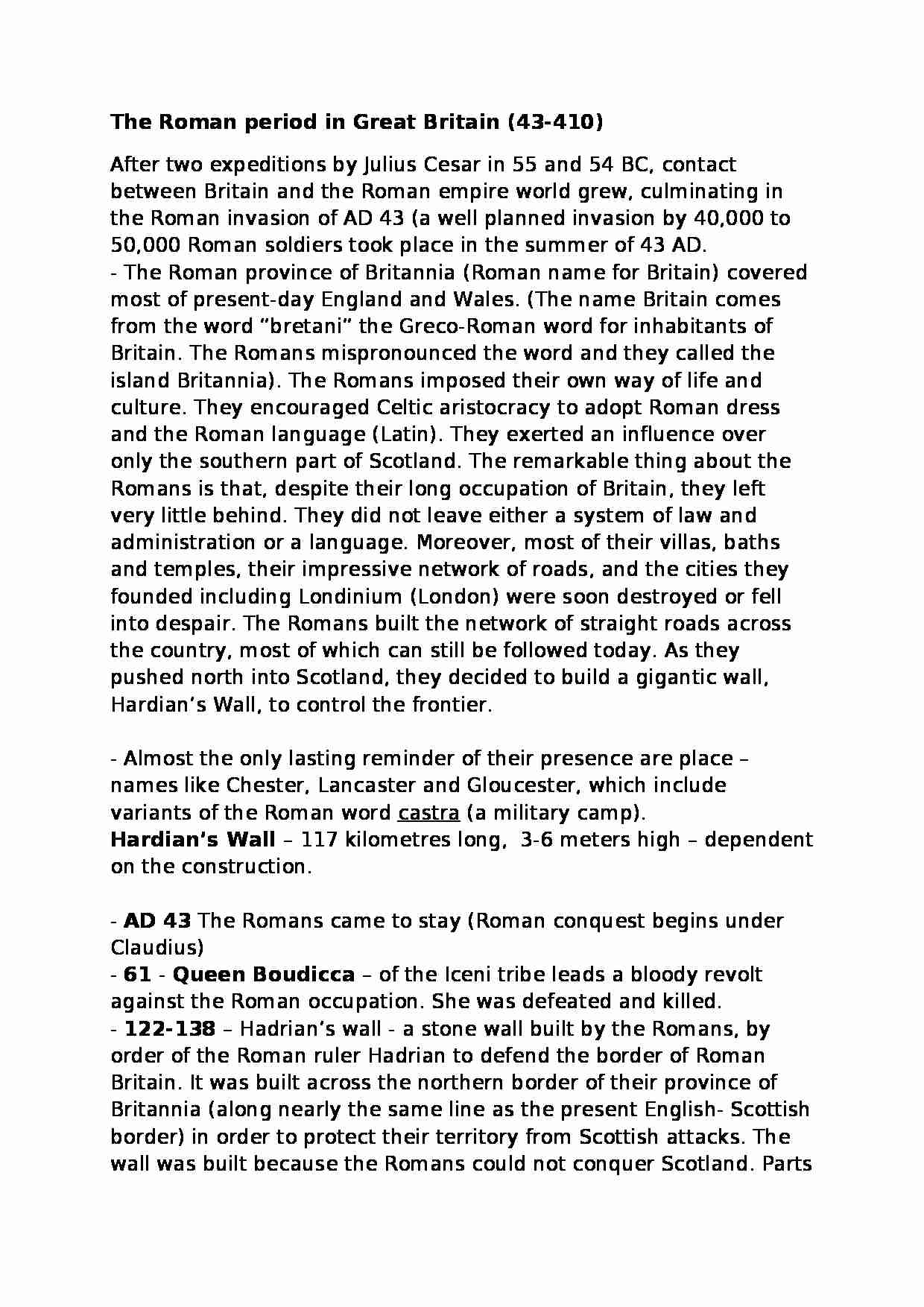To tylko jedna z 2 stron tej notatki. Zaloguj się aby zobaczyć ten dokument.
Zobacz
całą notatkę


The Roman period in Great Britain (43-410)
After two expeditions by Julius Cesar in 55 and 54 BC, contact between Britain and the Roman empire world grew, culminating in the Roman invasion of AD 43 (a well planned invasion by 40,000 to 50,000 Roman soldiers took place in the summer of 43 AD. - The Roman province of Britannia (Roman name for Britain) covered most of present-day England and Wales. (The name Britain comes from the word “bretani” the Greco-Roman word for inhabitants of Britain. The Romans mispronounced the word and they called the island Britannia). The Romans imposed their own way of life and culture. They encouraged Celtic aristocracy to adopt Roman dress and the Roman language (Latin). They exerted an influence over only the southern part of Scotland. The remarkable thing about the Romans is that, despite their long occupation of Britain, they left very little behind. They did not leave either a system of law and administration or a language. Moreover, most of their villas, baths and temples, their impressive network of roads, and the cities they founded including Londinium (London) were soon destroyed or fell into despair. The Romans built the network of straight roads across the country, most of which can still be followed today. As they pushed north into Scotland, they decided to build a gigantic wall, Hardian's Wall, to control the frontier. - Almost the only lasting reminder of their presence are place - names like Chester, Lancaster and Gloucester, which include variants of the Roman word castra (a military camp). Hardian's Wall - 117 kilometres long, 3-6 meters high - dependent on the construction. - AD 43 The Romans came to stay (Roman conquest begins under Claudius) - 61 - Queen Boudicca - of the Iceni tribe leads a bloody revolt against the Roman occupation. She was defeated and killed. - 122-138 - Hadrian's wall - a stone wall built by the Romans, by order of the Roman ruler Hadrian to defend the border of Roman Britain. It was built across the northern border of their province of Britannia (along nearly the same line as the present English- Scottish border) in order to protect their territory from Scottish attacks. The wall was built because the Romans could not conquer Scotland. Parts of the wall can still be seen and thousands of tourists visit it every year. - 410 the Roman army leaves Britain.
... zobacz całą notatkę




Komentarze użytkowników (0)